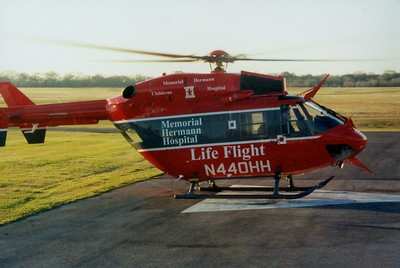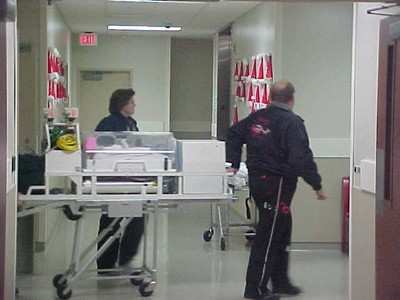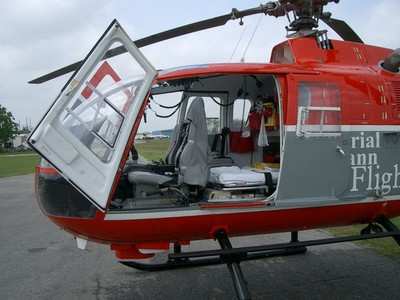Money Comes As Firm Looks To Replace Aging Fleet
ExxonMobil Foundation announced Wednesday it has made a $1
million contribution toward a new helicopter for Memorial Hermann
Life Flight Air Ambulance in Houston, TX -- and the rescue service
says it comes in the nick of time.

"We place a great premium on safety," said Gerald McElvy,
President, ExxonMobil Foundation. "Safety does not happen by
accident. To prevent and treat injuries, businesses must plan
carefully and train rigorously. We recognize these qualities in men
and women of Memorial Hermann Life Flight."
Tom Flanagan, Chief Operating Officer of Memorial Hermann - TMC,
underscored the need to add to the fleet. "We provide this rescue
service to everyone -- regardless of their ability to pay -- and we
want to continue to do so. That's why we've initiated a fundraising
campaign to help us meet the increased demand for this great
service."
The new helicopter will allow faster service to the east Houston
area. The grant represents approximately 15 percent of the seven
million dollar total cost of a new Life Flight helicopter,
including land for the base location, hanger and outfitting
equipment, according to an ExxonMobil press release.
Life Flight told the Baytown Sun the new fleet addition will
serve industries and communities along the ship channel east of
Houston.

"The system will also spend $500,000 to build an additional
helipad near Baytown -- a project that could cut response times to
the area by nearly 30 percent," said Life Flight Director Will
David. "Right now, from the time we get the call to the time we
land in Baytown is about 15 minutes coming from our south base. But
we feel like we can shave time off that by being based in that
area. It'll save lives, and we're really excited about that."
The new helicopter will be used to respond to calls from
citizens in Baytown and Chambers County, as well as employees at
refineries and plants in the Ship Channel corridor, David said.
"We already do come out there a lot," he said. "I wouldn't say
its mostly industry-related calls. It's primarily motor vehicle
accidents and people having strokes."
Not only will the new helicopter improve response times, but it
will also allow Life Flight paramedics to serve more critically
injured patients. Approximately 100 calls a year go unanswered.
 "Between 30 and 45 of the
estimated 3,000 calls received last year were from along the
Houston Ship Channel," said Flanagan
"Between 30 and 45 of the
estimated 3,000 calls received last year were from along the
Houston Ship Channel," said Flanagan
The base rate for a Life Flight ride is between $6,000 and
$7,000, David said, "but nearly half of patients who use the
service are underinsured or have no insurance."
Life Flight receives no federal, state or local funding and is
entirely funded by Memorial Hermann and donations.
"It's definitely something we do because we feel like it
benefits the community as a whole," David said. "If you get
severely traumatized patients to a Level One trauma center within
an hour, their chances for survival go up tremendously."
System administrators initially approached Conoco Phillips and
Marathon Oil Corporation to help promote fundraising with other oil
and petroleum companies.
That call was answered almost immediately, Marathon spokesman
Michael Trevino said. So far, nearly $25 million of the $36 million
goal has been raised.
"It was no surprise that companies like BP, Exxon Mobil, Conoco
Phillips and Shell would step up with (donations of) $1 million
each," Trevino said. "The potential value for our employees is
here."
Life Flight was established in 1976 as only the second
helicopter air medical program in the United States. Now into its
thirtieth year of operation, the men and women of Life Flight have
flown more than 110,000 missions.

Life Flight currently operates four air medical helicopters in
the Southeast Texas area: three Eurocopter BK117s and one BO105.
Both types of aircraft are capable of carrying two patients and a
three-man crew: a pilot, nurse and paramedic.
The aging fleet will soon be replaced by state-of-the-art
helicopters with GPS landing systems. The new aircraft will also be
approximately 25 percent more fuel efficient, offering an average
fuel savings of $37,000 per aircraft each year, according to the
agency.
 ANN's Daily Aero-Linx (04.30.25)
ANN's Daily Aero-Linx (04.30.25) ANN FAQ: Turn On Post Notifications
ANN FAQ: Turn On Post Notifications Classic Aero-TV: Agile Aeros Jeff Greason--Disruptive Aerospace Innovations
Classic Aero-TV: Agile Aeros Jeff Greason--Disruptive Aerospace Innovations Aero-News: Quote of the Day (04.30.25)
Aero-News: Quote of the Day (04.30.25) ANN's Daily Aero-Term (04.30.25): Expedite
ANN's Daily Aero-Term (04.30.25): Expedite






